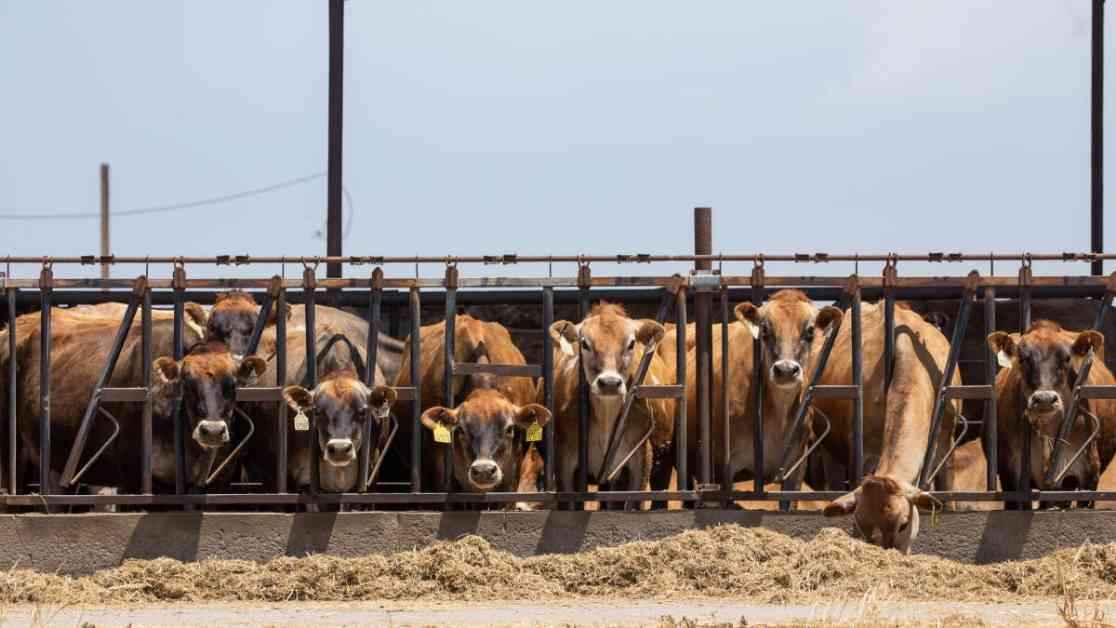A New Perspective on the Spread of Bird Flu in Dairy Cows
In a recent study published by the U.S. Centers for Disease Control and Prevention (CDC), surprising findings have emerged regarding the prevalence of H5N1 bird flu infections in dairy cows, shedding light on potential risks faced by veterinarians working with these animals. The study, featured in the Morbidity and Mortality Weekly Report, involved a collaboration between researchers from the CDC, the Ohio Department of Health, and the American Association of Bovine Practitioners, who analyzed 150 bovine veterinarians across 46 states and Canada.
Uncovering Unseen Infections: The Unexpected Discovery
The investigation revealed that three of the veterinarians tested positive for antibodies against the H5N1 bird flu virus in their blood, despite exhibiting no symptoms of the infection. This discovery raised concerns about the potential circulation of the virus among livestock, with implications for both animal and human health. Notably, none of the infected veterinarians reported any known exposure to H5N1-infected cattle or poultry, prompting questions about undetected sources of transmission.
Surprising Statistics and Expert Insights: Untold Risks and Implications
Seema Lakdawala, a microbiologist at Emory University, expressed surprise at the low percentage of veterinarians testing positive for H5N1 antibodies, compared to previous studies involving dairy workers. She emphasized the importance of surveillance studies in identifying undiagnosed infections and underlined the critical role of veterinarians in preventing outbreaks through enhanced biosafety measures. By wearing respiratory and eye protection, these frontline workers can minimize their exposure to potential risks and safeguard both animal and human well-being.
Jennifer Nuzzo, director of the Pandemic Center at Brown University, characterized the study as a nuanced blend of good and bad news. While concerns about unreported H5N1 outbreaks on farms surfaced, the limited incidence of infections among veterinarians offered a glimmer of hope for proactive prevention measures. This dual narrative underscores the need for continued vigilance and collaborative efforts to contain the spread of the virus and protect vulnerable populations.
Expert Perspectives on the Future Landscape: Unveiling Unseen Risks and Challenges
Reflecting on the implications of the study, John Korslund, a retired U.S. Department of Agriculture scientist, highlighted the intricate nature of assessing cattle incidence through antibody detection. While acknowledging the potential reassortment risks associated with subclinical infections, he emphasized the evolving landscape of the H5N1 virus, particularly the emergence of the D1.1 strain in Nevada and its implications for cross-species transmission. As the virus continues to pose uncertainties in terms of behavior and transmissibility, ongoing research and surveillance efforts are crucial in anticipating and mitigating potential threats.
In conclusion, the CDC study on bird flu infections in dairy cows unveils a complex web of unseen risks and challenges, underscoring the need for heightened awareness and preventive measures across the agricultural and veterinary sectors. By shedding light on the hidden dimensions of H5N1 transmission and human susceptibility, this research paves the way for informed interventions and collaborative strategies to safeguard public health and animal welfare in the face of evolving infectious threats.


